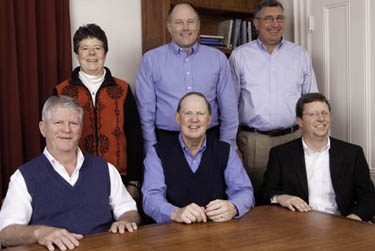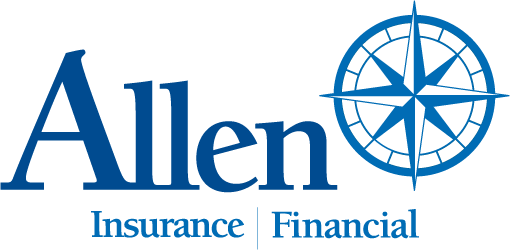A surge last Friday pushed markets into decidedly positive territory, and most major indices gained more than 1 percent on the week. Read more now.
Allen Insurance and Financial Welcomes Theresa A. Kavanagh
Theresa A. Kavanagh of Owls Head has joined Allen Insurance and Financial as a group benefits associate.


Based in the company’s Chestnut Street office in Camden, Kavanagh will be working with Allen’s group benefit specialists to serve clients all over Maine.
A native of Vermilion, Ohio, Kavanagh is a graduate of Denison University, where she received a bachelor’s degree in mathematics. After college, she sailed along the eastern seaboard and in Europe and the Caribbean. She settled in the Midcoast nine years ago; she was previously administration director at VillageSoup.
Outside of work, Kavanagh splits her time between gardening and working with her husband John to convert the former City of Portland fireboat to a live-aboard cruiser.
“I am thrilled to join Allen Insurance and Financial and become part of a team of professional and well-respected community members,” she said.
L.S. Robinson of Southwest Harbor joins Allen Insurance and Financial
L.S. Robinson, the seven-person insurance agency in Southwest Harbor is now part of Allen Insurance and Financial.
The purchase was finalized Nov. 18. Terms were not disclosed. L.S. Robinson will continue to operate under that name. All L. S. Robinson employees are being retained.
The deal brings together two companies each with a long history of serving the insurance needs of Maine people.
Founded in Camden in 1866, Allen Insurance and Financial is an employee-owned company with offices in Camden, Rockland and Saco. L. S. Robinson was founded in 1932 by Lawrence Robinson, a well-known Mt. Desert Island businessman who saw the need to provide his community with insurance services.
“Allen Insurance and Financial is a great fit for us,” said Bruce Bicknell, president of L.S. Robinson. “We will be able to provide a wider and more complete array of services for our clients while maintaining our focus on the unique needs of each client.

Back row, from left, Sara Montgomery, senior vice president, Allen Insurance and Financial; Mike Dufour, vice president, Allen Insurance and Financial and Ken Salvatore, principal, L.S. Robinson, Co. Front row, from left, Bruce Bicknell, president, L.S. satellite maps . Robinson Co.; Gilbert Fifield, president, Allen Insurance and Financial and Brad Bicknell, principal, L.S. Robinson Co.
Weekly Market Update: Dec. 1, 2010
It was a quiet week for equity markets due to the Thanksgiving holiday. Large-cap stocks drifted lower in slow trading, while small-cap and technology stocks gained some ground. Read more now in this week’s Market Update.
Sherree Craig Recognized by International Society of Certified Employee Benefit Specialists


Sherree L. Craig, CEBS, Insured Benefits Manager at Allen Insurance and Financial, has been awarded Fellowship standing in the International Society of Certified Employee Benefit Specialists for a two-year period.
Craig earned this distinction by successfully completing a national employee benefits continuing education exam developed by the Wharton School of the University of Pennsylvania.
The International Society of Certified Employee Benefit Specialists is an educational association dedicated to serving the professional development needs of those holding the Certified Employee Benefit Specialist designation. Craig earned her CEBS designation in 2004.
Craig is also a board member of the Maine Association of Health Underwriters and Rockland Rotary. Call Sherree at 230-5840.
Weekly Market Update: Nov. 22, 2010
With the 10-year Treasury at 2.937 percent late last week, we’ve seen a considerable selloff—yields are up from their recent low of 2.385 percent a little more than a month ago. Read more now.
Weekly Market Update: Nov. 16, 2010
A poor earnings forecast from technology giant Cisco and signs of accelerating inflation in China helped push the equity markets lower last week.
Sector breadth was also poor, as nine out of 10 S&P 500 sectors lost ground. Energy was the only area of growth, buoyed by elevated oil prices. Read more now.
Weekly Market Update: Nov. 10, 2010
The Federal Reserve confirmed last week that short-end rates will be low for some time.
With the purchase of $600 billion in Treasuries through the middle of next year, coupled with $300 billion in mortgage runoffs, the Fed is telling us that rates need to be lower.
Weekly Market Update, Nov. 3, 1010
Equity markets traded sideways in a fairly quiet week last week. Earnings reports continue to come in better than expected. Third-quarter earnings growth has risen 6 percent in four weeks, to about 30 percent year-over-year. Click to read more in our Weekly Market Update.
Weekly Market Commentary, Oct. 26, 2010
Equity markets posted modest gains last week, as the pace of earnings reports kicked into high gear.
With increased volatility and counterintuitive moves in stocks that reported strong earnings, it looks to us like some hedge funds are bidding up prices and then flushing their shares in an effort to make money, as opposed to expressing real concerns about future earnings. Read more now.
- « Previous Page
- 1
- …
- 83
- 84
- 85
- 86
- 87
- …
- 89
- Next Page »

